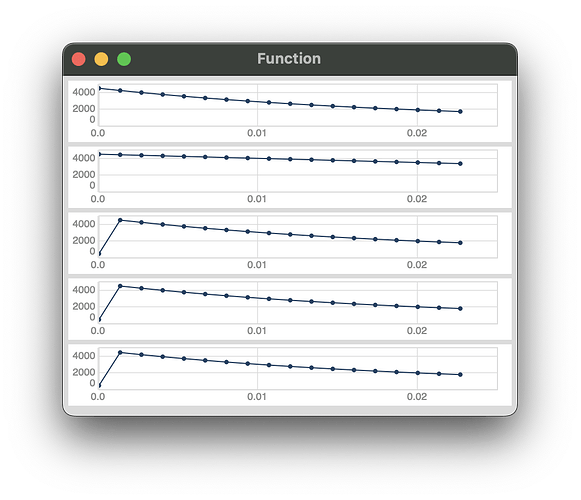Ah I see why the plots were misleading…
Plotting only the frequency envelopes show the correct behavior (IMO), i.e. an “immediate” (but still non-zero) onset from perc’s initial level of 0.
(
p = {
var egs = [
EnvGen.kr(Env([1, 0], 0.08, curve: -4)), // -4 is the default \perc curve
EnvGen.kr(Env([1, 0], [0.081])),
EnvGen.kr(Env.perc(0, 0.08)),
EnvGen.kr(Env.perc(0.001, 0.08)),
// even A2K on an ar envelope doesn't fix this!
A2K.kr(EnvGen.ar(Env.perc(0.001, 0.08))),
];
var modFactor = 8;
var freq = 500;
var freqs = freq * (1 + (modFactor * egs));
var sig = RLPF.ar(Saw.ar(100), freqs, 0.3);
// [freqs, sig].lace(egs.size*2)
freqs
}.plot(0.025).plotMode_(\dlines);
// { p.specs = [[0, 5000], [-1, 1]].dup(p.value.size).flatten(1) }.defer(1)
)
There is no repeated sample, but because you were plotting both k-rate and a-rate signals together, it upsamples the k-rate signals using K2A, which imposes a 1-block lag on the values.
This wouldn’t be an issue if we follow through with this idea of giving K2A a transition time argument.
